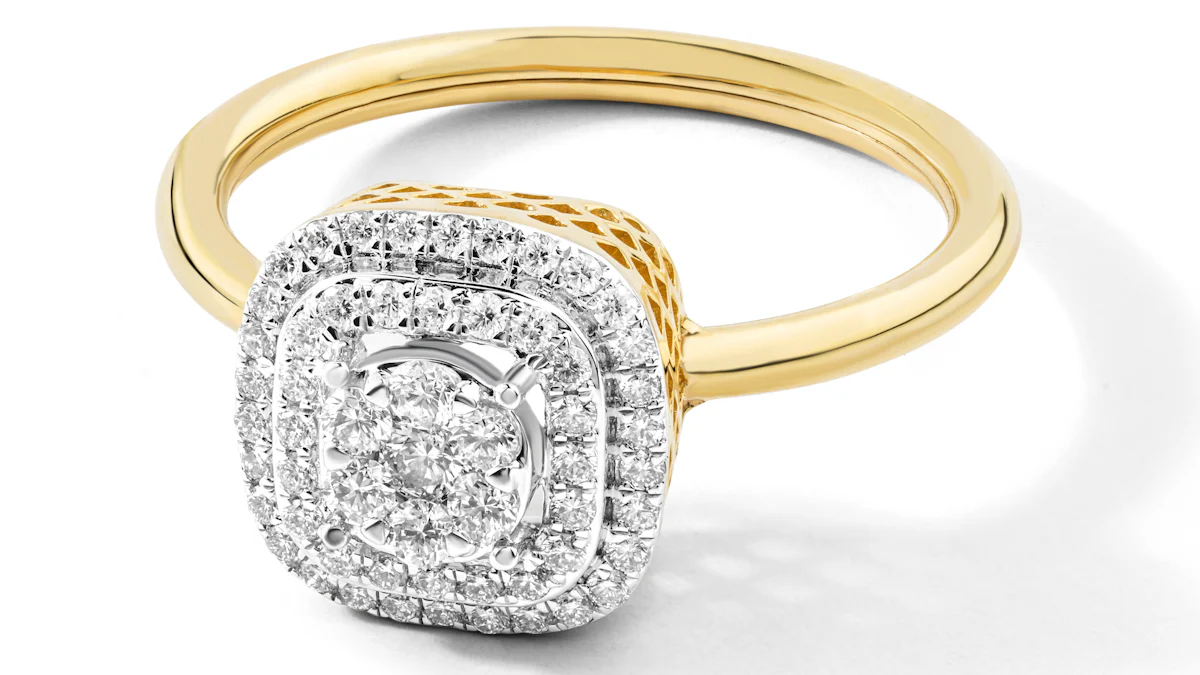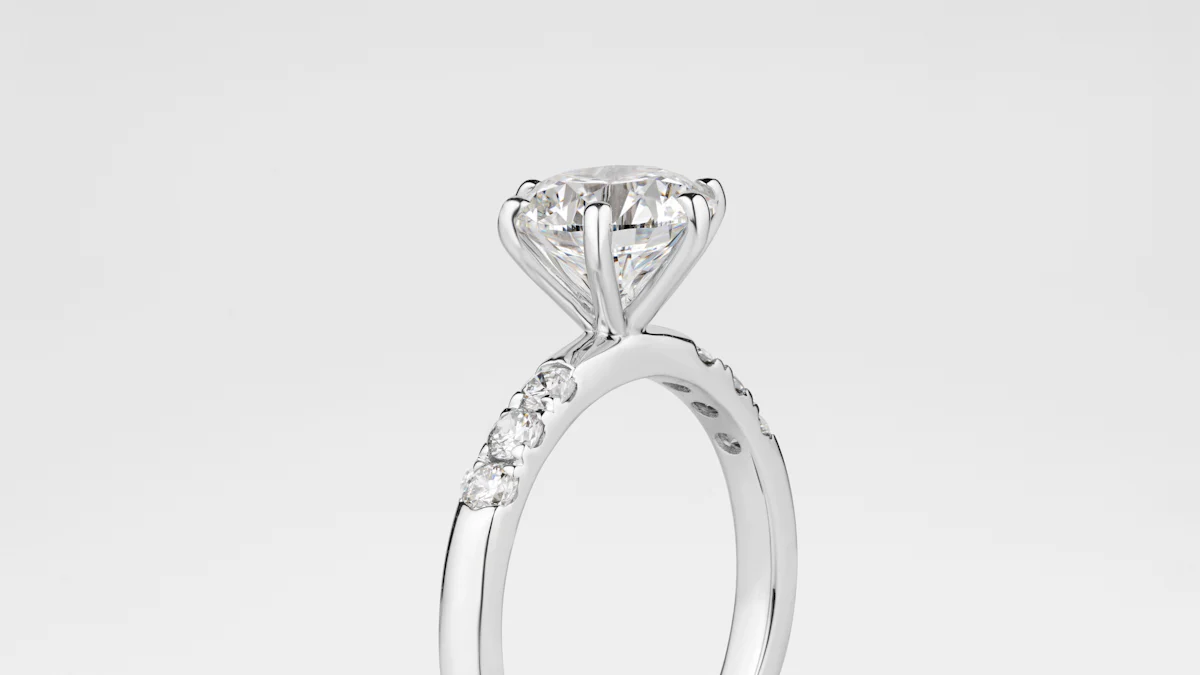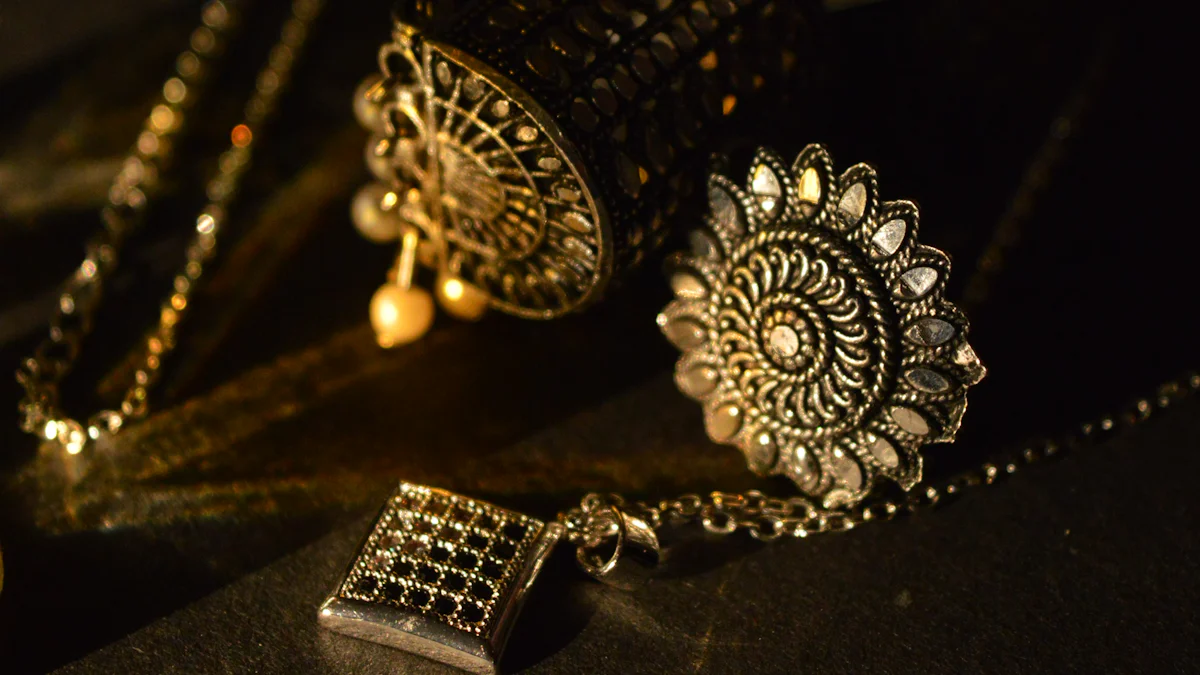Does White Gold Tarnish Over Time?

White gold has become a popular choice for jewelry lovers worldwide. Its durability and dazzling appearance make it a favored option for everything from engagement rings to fine necklaces. You might wonder, does white gold tarnish over time? Understanding this aspect is crucial for maintaining your jewelry's beauty. White gold often features a rhodium coating that enhances its look and provides protection. Knowing how this works helps you care for your treasured pieces effectively.
Understanding White Gold

Composition of White Gold
White gold is not a naturally occurring metal. You create it by alloying gold with other white metals. This process gives white gold its unique appearance and properties.
Metals Used in White Gold
In crafting white gold, jewelers often mix gold with metals like nickel, palladium, or silver. These metals help achieve the desired white hue. Nickel is a common choice because it adds strength and durability. However, some people may have allergies to nickel. In such cases, palladium or silver serves as a suitable alternative. Each metal contributes to the overall quality and color of the white gold.
Role of Rhodium Plating
Over time, the rhodium layer can wear off, revealing the natural color of the white gold alloy beneath. Regular re-plating helps maintain the jewelry's shine and color.
Differences Between White Gold and Other Metals
Understanding how white gold compares to other metals can help you make informed choices when selecting jewelry.
Comparison with Yellow Gold
Yellow gold and white gold differ primarily in color and composition. Yellow gold retains its natural warm hue, while white gold achieves its color through alloying and rhodium plating. Both types of gold offer durability, but white gold often appears more modern and sleek. If you prefer a classic look, yellow gold might be your choice. For a contemporary style, white gold could be more appealing.
Comparison with Platinum
Platinum is another popular choice for jewelry, known for its natural white color and exceptional durability. Unlike white gold, platinum does not require rhodium plating to maintain its color. It is denser and heavier than white gold, which can make platinum jewelry feel more substantial. However, platinum is typically more expensive than white gold. If you seek a luxurious and long-lasting option, platinum might be worth considering. White gold offers a similar aesthetic at a more accessible price point.
Does White Gold Tarnish?
White gold is known for its beauty and durability, but you might wonder if it tarnishes over time. Understanding the factors that affect tarnishing and recognizing the signs can help you maintain your jewelry's luster.
Factors Affecting Tarnishing
Environmental Factors
Environmental conditions play a significant role in the appearance of white gold. Humidity and exposure to chemicals can impact the rhodium plating on your jewelry. High humidity levels can cause the rhodium layer to wear off more quickly, revealing the natural color of the white gold alloy beneath. Chemicals found in household cleaning products or cosmetics can also accelerate this process. To protect your white gold, avoid exposing it to harsh environments.
Wear and Tear
Daily wear and tear can affect the appearance of white gold. The friction from wearing rings or bracelets can gradually erode the rhodium plating. Activities like swimming in chlorinated pools or using abrasive materials can also contribute to this wear. Regularly inspecting your jewelry for signs of wear can help you address issues before they become noticeable.
Signs of Tarnishing
Discoloration
Discoloration is a common sign that your white gold jewelry needs attention. As the rhodium plating wears off, you might notice a slight yellowish tint. This change occurs because the underlying alloy, which may contain metals like nickel or palladium, becomes visible. While white gold itself does not tarnish, the change in color indicates that it's time for maintenance.
Loss of Shine
Another indication of wear is the loss of shine. The rhodium plating gives white gold its brilliant, reflective finish. When this layer diminishes, your jewelry may appear dull or lackluster. Regular cleaning and professional re-plating can restore its original brilliance.
By understanding these factors and signs, you can better care for your white gold jewelry. Regular maintenance and mindful wear will help preserve its beauty for years to come.
Caring for White Gold

Proper care ensures your white gold jewelry remains as stunning as the day you first wore it. By following regular maintenance tips and seeking professional care when needed, you can preserve its beauty and shine.
Regular Maintenance Tips
Cleaning Techniques
To maintain the luster of your white gold, clean it regularly. Use a mild soapy solution made from warm water and a few drops of gentle dish detergent. Immerse your jewelry for several minutes, then gently scrub it with a soft-bristle toothbrush to reach any crevices. Rinse under running water and pat dry with a soft, lint-free cloth. This method effectively removes oils, perspiration, and grime that can dull its brilliance. Avoid harsh chemicals like bleach or chlorine, as they can weaken the metal and affect its appearance.
Storage Recommendations
Proper storage is crucial for preserving your white gold's shine. Store each piece in a cool, dry place, ideally in individual soft pouches to prevent scratching. An airtight container can also minimize exposure to air and moisture, which helps maintain the rhodium plating. Before storing, ensure your jewelry is clean to prevent any residue from causing discoloration over time.
Professional Care
When to Re-plate
White gold jewelry often features a rhodium coating that enhances its appearance. Over time, this layer can wear off, revealing the natural color of the alloy beneath. You should consider re-plating your jewelry every 1-3 years, depending on how frequently you wear it. Regular inspections can help you determine when it's time for a touch-up.
Choosing a Jeweler
Selecting the right jeweler for maintenance is essential. Look for professionals with experience in handling white gold. They should offer services like re-plating and thorough cleaning. A reputable jeweler will ensure your jewelry receives the care it needs to maintain its elegance and durability.
By following these care tips, you can keep your white gold jewelry looking its best. Regular cleaning and mindful storage, combined with professional maintenance, will help your pieces retain their sparkle for years to come. Remember, while white gold itself does not tarnish, maintaining its rhodium coating is key to preserving its beauty.
FAQs and Practical Advice
When it comes to white gold jewelry, you might have several questions about its care and maintenance. Here, we address some common queries and provide practical tips to help you keep your pieces looking their best.
Common Questions
How Often to Clean?
You should clean your white gold jewelry regularly to maintain its sparkle. A good rule of thumb is to clean it every few weeks if you wear it frequently. Use a mild detergent mixed with warm water for the best results. Immerse your jewelry in this solution for a few minutes, then gently scrub with a soft-bristled toothbrush. Rinse thoroughly and pat dry with a soft cloth. This routine helps remove oils and dirt that can dull the shine.
Jewelers Mutual suggests, "Properly cleaning after wear, prior to storing, is a simple yet effective way to keep your white gold sparkling clean."
Can Tarnish Be Removed?
While white gold itself does not tarnish, the rhodium plating can wear off over time, leading to discoloration. If you notice a change in color, professional re-plating can restore its original brilliance. Regular maintenance and cleaning can prevent the need for frequent re-plating. However, if the rhodium layer has worn off, visiting a jeweler for re-plating is the best solution.
Practical Tips
Daily Wear Considerations
When wearing white gold jewelry daily, consider a few factors to preserve its beauty. Avoid exposing it to harsh chemicals found in cleaning products or cosmetics. These substances can accelerate the wear of the rhodium plating. Remove your jewelry before swimming in chlorinated pools or engaging in activities that might cause scratches or damage.
Dana Rebecca Designs notes, "White gold really does make the whole place shimmer. Knowing how to care for and clean white gold jewelry can go a long way toward extending their brilliance."
Avoiding Damage
To avoid damage, store your white gold jewelry properly. Use individual soft pouches or an airtight container to prevent scratches and minimize exposure to air and moisture. Ensure your jewelry is clean before storing it to prevent any residue from causing discoloration over time. Regular inspections can help you catch any signs of wear early, allowing you to address them promptly.
Lane Woods Jewelry emphasizes, "To preserve the pristine allure of white gold jewelry, it is imperative to administer assiduous care and seek professional cleaning and restoration as necessitated."
By following these practical tips and addressing common questions, you can ensure your white gold jewelry remains as stunning as ever. Remember, while white gold itself does not tarnish, maintaining its rhodium coating is key to preserving its beauty.
To keep your white gold jewelry looking its best, remember these key points:
Regular Maintenance: Clean your jewelry with mild detergent and warm water. Avoid harsh chemicals to preserve its shine.
Rhodium Re-plating: Schedule periodic re-plating to maintain the bright finish. This step is crucial as the rhodium layer can wear off over time.
Proper Storage: Store each piece separately in a cool, dry place to prevent scratches and exposure to moisture.
By following these steps, you ensure your white gold remains as stunning as the day you first wore it.
See Also
Exploring 18 Karat Gold Necklace Treasures
Tips for Polishing Lab Created Diamonds
Best 15 Eco-Friendly Gold Jewelry Labels in 2024
Tungsten Diamond Bands vs Conventional: An In-Depth Analysis

